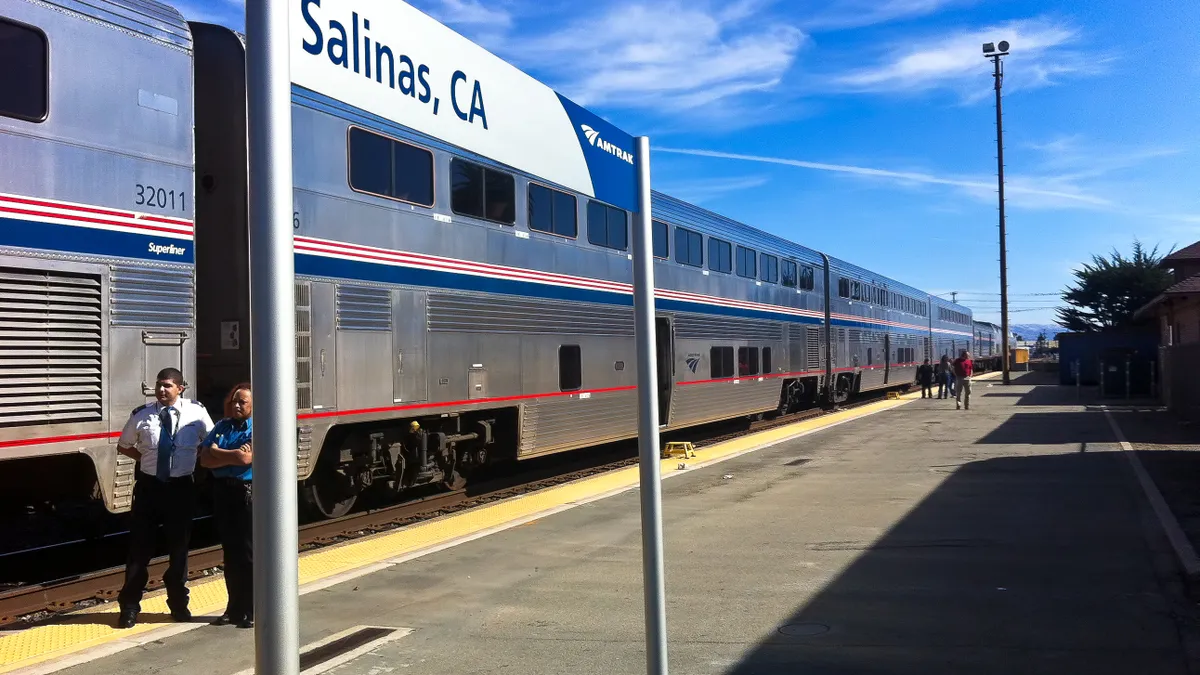Dive Brief:
- Facing a tight labor market, Amtrak and its labor unions are working together to recruit and train new workers, said Greg Regan, president of the Transportation Trades Department of the AFL-CIO.
- An $8 million federal grant Amtrak received for its new apprenticeship program will support those efforts. It anticipates the program will train more than 600 employees in the next three to five years.
- The railroad needs to expand both its skilled labor force and its management ranks as it prepares for “an unprecedented expansion of the company’s traditional rail operations mission,” according to the Amtrak Office of Inspector General, in a March report focusing on management needs to prepare for Infrastructure Investment and Jobs Act funding.
Dive Insight:
With the windfall of federal dollars from the infrastructure law, Amtrak is pursuing major projects along the Northeast Corridor — Amtrak’s Washington, D.C.-New York-Boston route — including major tunnel and bridge replacements. In addition, Amtrak’s intercity corridor plan could add 30 or more new routes and increase service on at least 20 existing lines. To meet those growth needs, Amtrak plans to expand its workforce as much as 21% this year, according to the Amtrak OIG report.
The railroad has hired 1,500 new employees as of June, but the tight labor market prompted it to offer hiring bonuses and relocation packages to fill critical positions. “They recognize they need to build up the workforce as aggressively as possible so that they can meet the service demands and meet the expectations that come with this amount of investment,” Regan said.
The labor leader added that Amtrak is “working closely with their unions to partner on how to bring more people into the workforce.”
The apprenticeship program offers new hires and existing employees a three-year career track for personal and professional advancement. With the $8 million grant from the Federal Railroad Administration, Amtrak will roll out the program to its training hubs in Washington; New York; Los Angeles; Chicago; Wilmington, Delaware; and Beech Grove, Indiana.
Those big projects also need managers to oversee them. Amtrak’s OIG report notes “the company lost many tenured managers as a result of downsizing and early retirements” during the pandemic, and it “was already struggling with reasonable distribution of responsibilities without the added workload” of the projects funded by the IIJA. Amtrak will need to hire more than 750 new managers in the current fiscal year, the report states.
The inspector general’s report criticized Amtrak for management lapses in several major projects, including the Gateway Program to repair and replace the tunnels under the Hudson River connecting New Jersey and New York. But the report also noted that Amtrak created a new Capital Delivery department “to manage the planning and implementation of major programs and projects – an area where we have identified weaknesses over the last decade.”
The OIG report urged Amtrak to focus on early program and project planning; provide sufficient staff with the right knowledge and skills to support each project; and hold managers accountable for project delivery.












